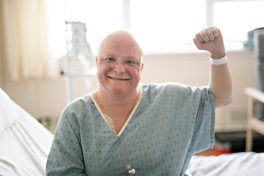
How to Make a Medical Negligence Claim for Cancer
Today is World Cancer Day - a global effort to raise awareness of cancer and encourage its prevention, detection and treatment.
NHS Improvement is responsible for improving the NHS and publishes monthly updates of safety issues in various care settings, such as hospitals and pharmacies. These are based on the reports submitted by the individual when patient safety incidents occur. NHS Improvement publishes these figures every 3 months and the latest commentary is now available here.
For free legal advice get in touch with our Medical Negligence Solicitors.
When something goes wrong in a clinical or medical setting, it should be recorded in a set form. This sets out what happened and is sent to NHS Improvement where it forms part of a collection of patient safety data being gathered from a variety of sources. This data then gets analysed to look for trends over 3 and 12-month periods to try to filter out peaks and troughs caused by seasonal variations, data bottlenecks and last-minute reporting.
These trends are then used to focus attention on those issues, practice areas or systems which need investigating in more depth. NHS Improvement can then deliver training, guidance or planning to reduce the risk recurrence.



The data itself is divided into several categories. Those that are most interesting to potential patients are:
These can then be filtered further by manually cross-referencing them with where they occurred (e.g. GPs, hospitals or ambulances) and, finally, by the severity of the harm caused.
The figures for ‘severe harm’ and ‘death’ are those that most patients will be interested in knowing about before they seek treatment. Whilst ‘death’ has its normal meaning, ‘severe harm’ has a broader definition than might be expected by the average patient. It includes any incident which caused unexpected permanent or long-term harm to a patient.
This is not clarified further and so is potentially confusing to the average person wanting to use this data to decide if their hospital is safe. However, the data doesn’t go down to the level of showing which hospitals or GP surgeries are doing the reporting.
One of the most important points to bear in mind is that the figures really show how many adverse incidents were reported. This isn’t always the same as the number that actually occurred. In fact, there’s no guarantee given that these are the same and the amount of actual patient-harm events is not given. Going further, the guidance makes it crystal clear that the figures do not mean that actual patient harm is changing one way or another.
That said, reporting harmful incidents is one of the key steps in moving towards a zero-harm system. Good clinical governance is based on identifying where weaknesses lie. A system which seeks to hide harmful incidents or punishes staff who report them is unlikely to improve. An increase in the number of cases being reported is a strong indicator that the hospital takes its responsibilities seriously.
This sort of data provides useful insights into the general level of patient safety and is helpful in that regard. However, it isn’t intended to provide specific information on error levels at individual hospitals or clinics.
The safest option is for patients trying to use this data to ask their doctor about the specific risks of their treatment before they agree to have it. All clinicians are required to provide clear information about the risks of medical treatment to allow patients to make informed decisions about what’s best for them.
This data does show that serious harm is rare. However, if the worst happens and you do suffer avoidable harm, then the NHS’s Duty of Candour requires it to investigate in much more detail and report back to you.
If you are dissatisfied with the way in which the investigation has been conducted, you can ask the Parliamentary & Health Services Ombudsman to investigate it. In some cases, it’s appropriate to seek compensation to help you live with the effects of negligent treatment.
For information on how to make a compensation claim, get in touch with our specialist Medical Negligence Solicitors.

Today is World Cancer Day - a global effort to raise awareness of cancer and encourage its prevention, detection and treatment.

A crucial part of claiming compensation for a late or incorrect diagnosis of cancer is investigating what mistakes were made and why.

For all medical negligence claims in the UK, you need to prove that: Treatment or care fell below a reasonable standard (called breach of duty); and unacceptable treatment or care has caused avoidable damage and loss.
Fill in the form below to get in touch with one of our dedicated team members, or call our team today on: 0808 239 6043